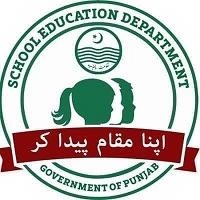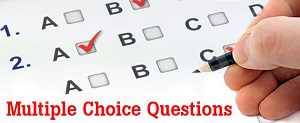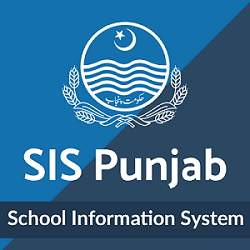The Islamia University Bahawalpur
No.—————–Acad
Dated——–2006.
The coordinator,
Department of Computer Science,
The Islamia University Of Bahawalpur.
Subject: Approval Of New Syllabus Of B.A./ B.Sc. Advanced Computer Studies (ACS)FROM THE ACADEMIC SESSION 2005-2006
Dear Sir,
I am directed to inform you that the Academic Council and the Syndicate at their meetings held on 15-05-2006 respectively have approved the new syllabus of B.A/B.Sc. advanced Computer Studies (ACS) from the Academic Session 2005-2006 vide Annexure-A.
Yours faithfully:
D.A/As above– Deputy Registrar (Acad).
For registrar 25-7-06
Copy to along with a copy of said Syllabus.
- Controller of examinations.
- All Principals of Govt.’s Private Affiliated Colleges concerned.
- Secretary to vice-Chancellor.
- A. to registrar.
ISLAMIA UNIVERSTY BAHAWALPUR
REVISED CURRICULUM of ADVANCED COMPUTER STUDIES (ACS)
For B.A / B.SC.EXAMINATION 2005 & ONWARDS
COURSE MARKS: 200
THEORY: 160
PRACTICAL & PROJECT: 40
Paper I, II and C++ practical will be offered in the third year and paper III. IV and project work in fourth year. Paper I, II, III and IV all have two sections each which carry equal mark.
THIRD YEAR
PAPER – I Introduction to information Technology 40
PAPER -II Programming using C++ 40
PROJECT PRACTICAL using C++ 20
FOURTH YEAR
PAPER -III Data Base Management system 40
PAPER-IV Introduction to Web Programming 40
PROJECT 20
ASSESSMENT METHOD
THEORY PAPERS FOR THIRD & FOURTH YEAR
Marks: 40 (Section A: 20 marks + Section B: 20 Marks)
Time : 2 hrs.
Total Question : 8
Question to be attempted : 4
Each paper shall consist of two sections: Section A and Section B. Each section shall consist of four questions and student will be required to attempt from each section.
PRACTICAL using C++ (Offered in 3rd Year)
Marks : 20
Time : 90 minutes
Total Questions : 3
Question to be attempted :2
Writing programs on an answer sheet: 45 minutes (Marks: 7.5)
Editing, Compiling & Executing programs on a PC and via: 45 minutes (Marks: 7.5 + 5)
Solution of two question to be written on an answer sheet and then edited, compiled & executed those Programs on a PC. Each question to be written carries 7.5 marks and via is of 5 marks. Via will be related to the concerned C++ language.
Islamia Universally Bahawalpur: ACS Syllabus for B.B/B.SC. Session 2005 onwards (page ¼)
PROJECT (Offered in 4th Year)
Marks : 20
Time : 90 minutes
Evaluation of the project work by Examiner is done as: Report Writing (7.5 marks) + Coding (7.5 marks) +Viva (5 marks)
PROJECT (related to Data Base or Web Programming using Data Base) is assigned by the department. Work is done extensively and completely in the said area but which has limited scope. Four Students will work on a single project and will contribute equally during all the stages of development life cycle.
THIRD YEAR
PAPER-1 INTRODUCTION TO INFORMATION TECHNOLOGY 40
Section- A Fundamentals of a Computer 20
History , Classification and Types of Computer, Different between Software, Hardware & Firmware. Latest Input and output device .Primary and Secondary storage device , Part of a C.P.U. What is a Computer Languages and its Generations?
Introduction to Operating Systems.(Boot process, OS types: Desktop, Multiprocessing Distributed, Real Time, Hand held). Definition of a Process and its states.
Boolean algebra: Number Systems and their inter conversation.
Introduction to Destructive programs (Viruses Worms Bacteria)
Section-B Introduction to Networking. 20
Introduction to Networks ,Types of Networks, Topologies (Bus, Ring, Stars & Mesh), Concepts of LAN and WAN, Connecting Devices (Layer 2 switches, Routers, Bridges , and Repeaters etc),Definitions functions of OSI Model.
Introduction to the Internet ,Email transfer , Voice Mail Conferencing , What is a protocol?, Introduction to protocols, (IP and its classes, TCP , UDP), Domain/peer based networks, Concepts of Privileges and Rights, Servers (SMTP DHCP DNS DOMAIN CONTROLLERS)
RECOMMENDED BOOIKS
- Introduction to Computers (5th edition) by peter Norton’s
- Computer Fundamental by P.K. Sinha
- Data Communication & Network by Behrouz A. Forouzan
PAPER II PROGRAMMING USING C++ (OOP is EXCLUDED) 40
Section A 20
Flow Charts, Basic Data Types , Conditions Statements (If, if-then-else, nested if and Switch Statement) , Iterative Statements (For, While and Do-While Loop), Nested Loop , Functions (using Local Global variables), Local and Global functions ,Built in Function, cell cos, Cosh, exp,fabs,floor,fmod,frexp, ldexp, log,log10, modf,pow,ain, shin, apart ,tan,tanh.
Islamia University Bahawalpur.ACS Syllabus for B.A/B.Sc.Session 2005 Onwards (2/4)
Section B
Arrays ( Single dimension and two dimension Arrays). Structure pointers use of pointers in function, single dimension and in structure strings. Built in function of strings memchr, memcmp, memcpy, mommove, memset , streat strchr, strcmp, stroll, strcpy, strcspn, strerror, strlen, strncat, strncmp, strncpy, strchr, strpbrk, strspn, strstr, strtok, strxfrm, strcmpi, stricmp, strncinpi, strnicmp, memicmp, movedata, stpcpy, strdup, stricmp, strlwr, strnicmp, strnset, strrev, strsct, strupr
Recommended books
- Programming for the pc using turbo C++ by Robert Lafore
- C++ Schaum series
Practical C++ 20
Fourth year
Paper III Data base Management System 40
Section A
Introduction: Define Software Engineering Software characteristics Why Software engineering IS Needed.
Introduction Software development life cycle Introduction to SDLC . Describe all stages of SDLC in detail.
Software Analysis & design Techniques: DID decision table data dictionary flow chart software process models: What is software process model? Classic life cycle (water fall model), RAD MODEL.
Introduction to DBMS: database and its advantages. Traditional file system and its disadvantages.
Section B 20 Marks
Database design and normalization and why we need it? Keys (primary super composite candidate forcing),1st 2st and 3rd normal forms.
Introduction to SQL “SQL” statements(Create, Select,Insert, Update , Delete , Where clause using AND / OR ) Note : Sub quries and Joins are excluded
MS Access 2000 Workshop : How to create a Database and Table ? How to write a qury ? How to develop forms and Reports ? How to show relationships?
Recommended Books :
- Software analysis Design By Kandle and Kandle
- Modern Data Base Management (6th Edition ) By Fred Me faddan Jaffaery A
- Database system by : Katherine Recardo
- MS Access – Aikman Series.
Part – IV Introduction for Web Programming
Section –A
Introduction to HTTP Protocol, Introduction to HTML version 4.0.Syntax, Tags and attributes. Form Controls ,VB Scripting ,Variable and Syntax ,Logical Structure, Looping, Arrays, Function and Subroutines , String Handling , Scripting Events, Introduction to 3-Tier Model,
Section – B
Introduction to ASP, Introduction to IIS, (Deployment of ASP and Linked DB), Response Object , Request Object , Introduction to ADO control, Accessing Data with ADO(Insertion Deletion, Modification)
Recommended Books:
- Mastering Active Server Pages by A. Russel Jones
- Web site for HTML 4.0 such as http://www.w3.org/markUp/Guide
PROJECT
Project (related to Database OR web programming using Database) is assign by the Department. Work is done extensively and completely in the said area of Limited scope .Four Students will work on a single project and will contribute equally during all the stages of systems development life cycle.
Marks of Project work should be evaluated as Report Writing (7.5Marks)+Coding (7.5Marks)+Viva (5Marks)
Guide Lines for Project Reporting Writing
Report Should be consist of all phases of System Development Life Cycle (using Structured Techniques only).Problems, Objectives, Organization Chart , Data Gathering Techniques , Data Flow Diagram , E-R Diagram , Normalization with the Anomalies , Relationship Diagram (Computer based), User Documentations (Including at least four DB Reports )
For Software modeling: Using MS Project or MS Visual
For Database Project: Using MS Access (Forms DB and Queries)
For Web Programming (Using Database). Project using VB Script, ASP and MS Access.



